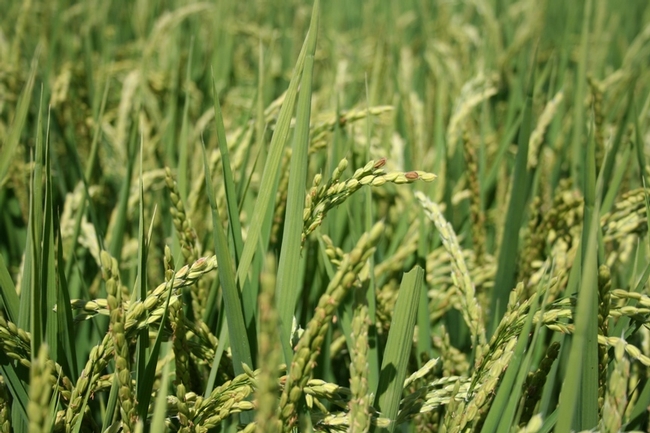In the past few days we've seen some unusual high temperatures in the Sacramento Valley, and looks like the hot weather is going to continue for a few more days. By mid morning temperatures are reaching 80o F, by 2 pm we are close to 90o F, and late in the afternoon temperatures can easily reach 100o F or more. Rice at the moment is heading (40% headed by August 12, according the USDA's Statistics Service report), putting some rice at risk of high-temperature sterility.
Anthesis (the opening of the flowers or spikelets) is the most susceptible stage of rice to high temperature damage. Very high temperatures cause indehiscence of anthers (anthers not opening), reduce pollen production and viability, and can dry the germinating pollen tube before fertilization occurs. In rice, spikelet sterility by heat occurs during and up to 3 hours after anthesis. Once fertilization is complete, spikelet sterility does not occur. Generally, anthesis is believed to occur between 9:00 am and 2:00 pm. In one study*, anthesis in M-202 was found to occur between 9:30 and 10:30 am. Given these times, rice would be susceptible to high temperature spikelet sterility from morning to mid afternoon.
In the above referenced study, when the average daytime temperature during anthesis was 95o F, spikelet sterility increased by more than 70%. Unfortunately, the study did not indicate the temperatures right at anthesis, just the daytime average. It is believed that temperatures should be above 104o F during anthesis to cause sterility. We had a couple of days last week when temperatures reached this level, putting rice at risk of spikelet sterility. We'll have to wait to evaluate if this actually happened.
*Prasad, P. V. V., K. J. Boote, L. H. Allen Jr., J. E. Sheehy, and J. M. G. Thomas. 2006. Species, ecotype and cultivar differences in spikelet fertility and harvest index of rice in response to high temperature stress. Field Crops Research 95: 398-411
